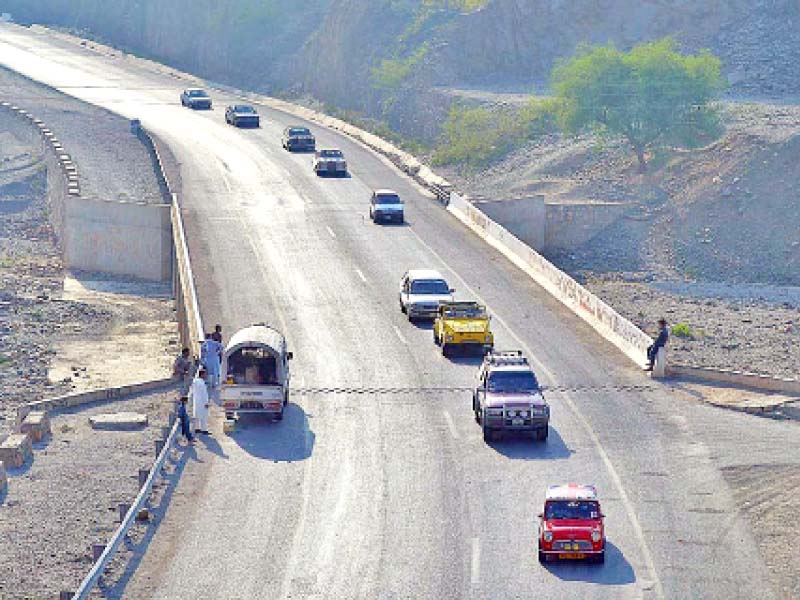
The newly notified nature reserves will help boost adventure, historic and heritage tourism in the area along with generating green jobs and business opportunities for locals under 10 Billion Tree Tsunami.
Special Assistant to the Prime Minister (SAPM) on Climate Change Malik Amin Aslam said this with regard to three newly inaugurated interconnected nature reserves spreading over Parera, Ara and Dil Jabba areas of 18,000 acres in Chakwal district of the Rawalpindi division.
He said these reserves were home to the most attractive tourist and heritage sites of Tilla Jogian, Nandana Fort, Sikki waterfall, Sikki Lake and most interesting paragliding point.
The historic sites included The Nandana Fort, the tomb of Hazarat Hamm, Dhamrayi and Bhatta Darbars.
The Nandana Fort was built under the patronage of Hindu Royal empire that had military significance in the Salt Range. The King of Hindu Royal empire Jayapala's son Anandapala built a Shiva Temple at this site where the Fort's name was derived from Hindu god's garden which was conquered by Mahmood Ghaznavi in 11th century.
Moreover, the great Muslim philosopher, mathematician and historian Abu Rayhan Al-Beruni also measures the Earth's circumference at this spot where the Fort's remains were present on the occasion, he informed.
The nature reserves were notified under the Prime Minister's Protected Areas Initiative to ensure protection and sustainable management of the forests existing in Chakwal, he told APP adding, these protected areas would be linked to historical and heritage tourism aimed to highlight thousands of years old civilization sites in the area along with Eco-tourism.
He added that the three particular interventions were made in this project to involve local community. Firstly, the forest guards were hired from the local community. Secondly, there were wild olives proliferating in the natural forest reserves which would be enabled to bear olive fruit after grafting within next two years which would benefit local communities.
Thirdly, he said local masses would be given bee hives to breed honey bees producing honey under 10 Billion Tree Honey initiative of the government.
The SAPM highlighted that the area was cradle of centuries old civilization heritage where Nandana Fort was the most significant place as Al-Beruni calculated the world's circumference at this location.
"This is our historical heritage that has been forgotten and will be revived through this ecotourism initiative."
He said an information center with toilets and rest house was being renovated to provide proper facilities to the tourists.
To a question, he said infrastructure development was the responsibility of the Punjab government which would help boost revenue at the local and provincial level.
He went on to mention that local communities through education and awareness sessions would be taken on board to protect the wildlife from poaching and hunting as no hunting was allowed in these natural reserves.
Responding to another query, he said ten walking trails were developed within these three sites which was a scenic place for hikers and adventure tourists.
Published in The Express Tribune, February 8th, 2021.
COMMENTS (1)
Comments are moderated and generally will be posted if they are on-topic and not abusive.
For more information, please see our Comments FAQ



1725884859-0/Tribune-Pic-(8)1725884859-0-165x106.webp)
1725888312-0/Untitled-design-(7)1725888312-0-165x106.webp)

1725859023-0/Untitled-design-(38)1725859023-0-270x192.webp)






1725699727-0/Untitled-design-(7)1725699727-0-270x192.webp)
1723104747-0/PIA123-(1)1723104747-0-270x192.webp)









This legal marking out of nature reserves is a wonderful initiative. Also to acknowledge the excellent vision and work done by Mr. Malik Amin Aslam vis a vis environmental care. Tourism or eco-tourism heritage tourism these terms are in popular circulation. But they require holistic long-term views detailed frameworks from federal to provincial and local levels - And on the other side - in the universe of tour operators heritage studies eco-training waste management human safety etc as well as responsible-tourism programs in schools colleges through media. Let s take Tilla Jogian as a case in point. The brave work of community wardens in KP and GB has proven successful and would be greatly welcome here in terms of nature preservation. In the same breath a road is being constructed all the way to the summit of this mountain in order to provide access to a guest house located adjacent to the heritage sites. To have cars coming into an area whose very value is a meditative tradition of over 2000 years - this is a disaster in the making. With all good intention and for petty change we destroy our heritage sites for lack of understanding their meaning . For Tilla Jogian WALKING TRACKS only. This takes us to preservation. The temples monastic meditation cells and the site of Baba Guru Nanak jee s chilla - all these have been so greatly vandalised over the past five decades that unskilled repair and preservation may turn the natural terrain into a desecrated Disney-land using new materials etc. Private-public ventures such as Lahore s Old City Wazir Khan mosque area with Agha Khan support are successful preservation models. There are many that are not - archaeologists and historians often acknowledge that we do not have sufficient training in built heritage preservation. It may be wiser sometimes to support things as they are. only. Well-documented and multi-lingual information on site - with drawings of the original spaces - may better serve the preservation instinct in really torn down areas like Tilla Jogian. This takes us to tourists themselves. Many come here honouring the histories this mountain summit upholds all at once Guru Gorakh Nath Master of Kanphatta jogis and guardian of the hatha yoga tradition among a lineage of ascetics and master meditators who settled here Guru Nanak jee who is known to have established chilla on the western edge of the hill for some years Mughal visitations including Akbar and Jahangir and even Ranjha s love-torn renunciation after Heer s betrothal his seeking in with the jogis narrated in local myth and poetry the ground is here. Stories keep making themselves up site-specific claims get confused but there are walkers and seekers who honour the land. And then again as we see at Tilla Jogian. The floor of monastic areas torn out roofs of temples broken paintings scratched out to the point of illegibility information plaques broken with lay stone I was here grafitti carved markered manic layer upon layer. Some of the destruction may be attributed to persons looking for buried wealth as writer Salman Rashid points out - though wealth and jogis - again tragic misunderstanding. Surface desecration this is a phenomenon across multi-heritage sites in Pakistan and it s this that requires a view a response that is longest term and with all resources as hand. In a word marking out terrain for tourism building link roads and restaurants handing off development projects without thorough eco significance safeties in place tourism without time sense Perhaps better than this is natural nihilism for this country s ancient heritage to be absorbed in by the land itself. For all who care...